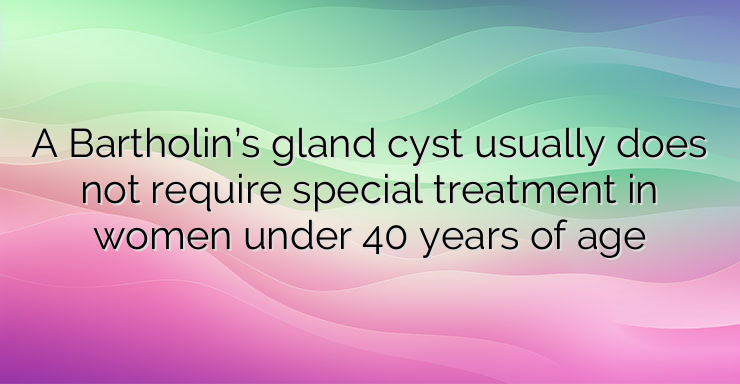Bartholin’s cysts are mucus-filled sacs that can form when the glands near the opening of the vagina are blocked. Cysts are usually painless, but if they are large, they can cause discomfort during movement or intercourse. The cysts can become infected, forming a painful abscess. Bartholin’s glands are very small, round glands that are located in the vulva (the area surrounding the external genitalia) on either side of the opening to the vagina. Because they are located deep under the skin, they usually cannot be felt. These glands can help release secretions during intercourse. If the duct to the gland is blocked, the gland fills with mucus and increases in size. The result is a cyst. These cysts develop in about 2% of women. They usually affect women around the age of 20. Cysts can become infected, forming an abscess. As women age, they are less likely to develop cysts and abscesses. It is not usually known what causes the gland duct to become blocked. Rarely, cysts are the result of a sexually transmitted infection, such as gonorrhea. Most Bartholin’s cysts do not cause any symptoms. But if their size becomes too large, they can cause discomfort during walking or sexual intercourse. Women may notice a painless lump near the opening of the vagina that makes the vulva appear distorted. If the cyst becomes infected, it causes severe pain and sometimes fever. Abscesses are tender to the touch. The skin over them looks red and women may have vaginal discharge. Cysts that do not cause symptoms and complaints on the part of the patient can be treated conservatively. In such cases, a sitz bath or warm water compresses can be used. Compresses should be applied for 10 to 15 minutes and done 3 or 4 times a day. Sometimes cysts disappear after a few days. If treatment is ineffective, women should see a doctor. In women under 40, only cysts that cause symptoms require treatment. Draining the cysts is usually ineffective because they often recur. Thus, surgery can be done to make a permanent opening from the duct of the gland to the surface of the vulva. In women over the age of 40, all Bartholin’s cysts should be treated, except those that have existed for years and have not changed in appearance. Treatment includes surgical removal of the entire cyst or biopsy (removal of part of the cyst to test for malignancy), followed by marsupialization of the cyst. For an abscess, initial treatment involves making a small incision in the abscess to drain it. If the abscess fills again after drainage, marsupialization can be done, which creates a permanent opening to prevent the abscess from filling again. If the skin and tissues under the skin around the abscess are infected,antibiotic treatment is administered for 1 week in addition to drainage of the abscess. References: https://www.msdmanuals.com/home/women-s-health-issues/miscellaneous-gynecologic-abnormalities/bartholin-gland-cysts


Leave a Reply